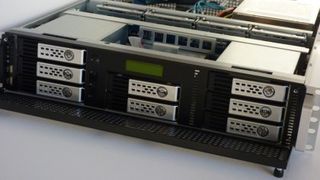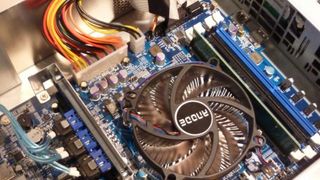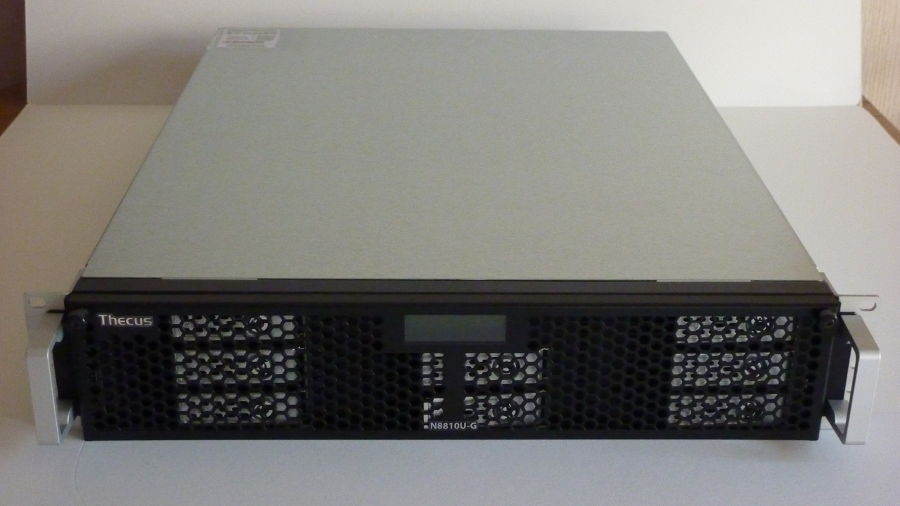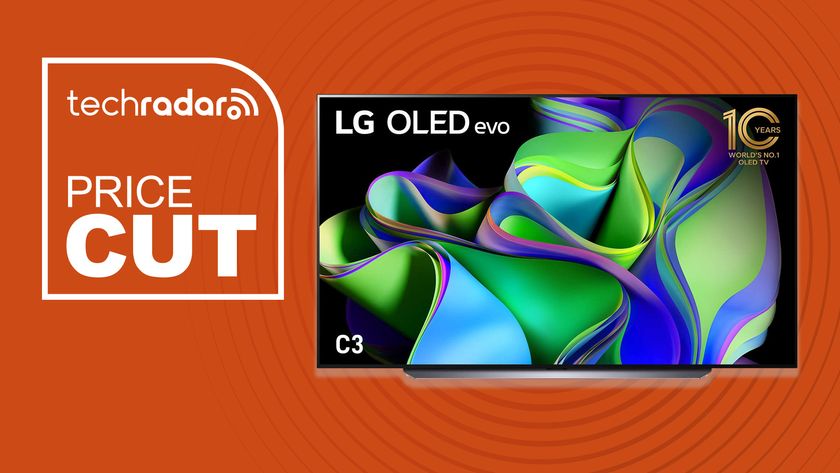Why you can trust TechRadar
Since the N8810U-G is a 10GbE device, testing at full speed required a 10GbE card installed in my PC. Thecus kindly lent me a C10GTR PCI-Express card for testing, while Netgear sent me a ProSafe XS708E switch. An evaluation of these products is best saved for another time, but this was sufficient to test the full speed of the N8810U-G.
I used eight WD Red 6TB hard disks, and chose RAID 5 for the array, assuming it would be the most popular choice, combining redundancy and performance, without sacrificing too much capacity.

Although 48TB of capacity was installed, it's important to recognise that this is in decimal, while Windows and other operating systems use the binary TiB to measure capacity, so it looks like less. Overall the usable capacity came to 38TiB, with one disk as a spare.
I performed three tests. To and from the N8810U-G and a RAM drive, with a file transfer of a folder containing 3.5GB of small files, and then with 5GB of large files. I then measured the speeds with Teracopy, which seems to give lower speeds than a direct file transfer. I also used the Intel NAS Performance Toolkit software, for a broader performance overview. This score can be easily compared between NAS devices.
It's also worth bearing in mind that the maximum possible transfer speed over 10GbE is 1.25GB/sec, and no device can go faster. Of course, with faster, pricier enterprise disks than the WD Red 6TB you should get some better speeds, although this will increase the overall cost of the unit.
Promising results
In all three tests, write speeds were faster than read. With the Teracopy file transfer tests, I measured exactly 60MB/sec read and 121MB/sec write. While this result for writing is exponentially higher than you get from a typical two-bay NAS, the read speeds are only around 25% higher.
Large file transfer speeds were much better. In Teracopy I measured 368MB/sec write and 152MB/sec read. This is reasonable, but not quite what I was expecting.

When using file transfers in Windows 8.1 I recorded far better scores. Reading averaged at 432MB/sec, while writing results came in at 642MB/sec, which is very impressive.
The Intel NAS Performance Toolkit showed some interesting speeds. File Copy To NAS came to 428.3MB/sec, HD Record levelled off at 357.8MB/sec. The tough Photo Album test, which really pushes a lot of tiny files to the NAS, measured at 31.8MB/sec, which sounds awful, but is still three times higher than a two-bay Zyxel NSA 325 I had previously tested. It's as if this test is down to the device CPU rather than raw throughput.
Overall then, promising results, but perhaps not the very best you can get from a 10GbE NAS. Indeed, while I haven't got a lot of results to reference, a quick look online shows other NAS units managing higher read and write speeds, pushing 800MB/sec in some cases over 10GbE.
But nevertheless, it's still awesome to see such speeds from a piece of copper Ethernet cable.














